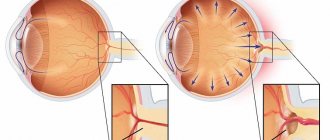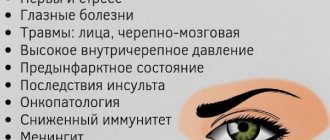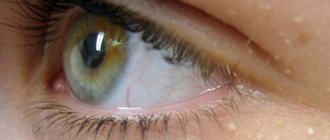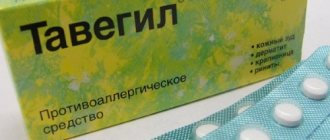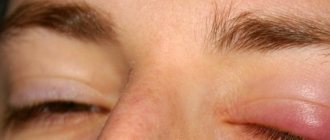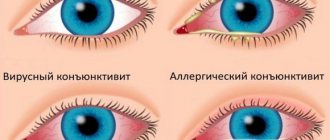When does it hurt between the eyebrows?
Even minimal stress can provoke a sharp throbbing pain between the eyebrows. Sometimes, to eliminate pain, it is enough to drink soothing drops, mint tea and relax. If the discomfort is caused by the patient’s pathological condition or disease, a single dose of tablets is not enough.
Traumatic brain injury
The cause of pain in the forehead can be damage to the bones of the skull, face, or cerebrovascular accident. Injuries accompanied by discomfort are noted:
- Bruised forehead.
- Cutting of the eyebrow, forehead.
- Eye contusion.
- Foreign body entering the eye.
- Bruised eye socket.
- Concussion.
If a person suffers a head or face injury, it is necessary to call a doctor and provide first aid on the spot:
- Lay the victim on his side, turning his head closer to the ground.
- Apply cold to the injury site. You can use a towel soaked in water or a packet of sour cream from the refrigerator.
- In case of an open injury, treat the wound with an antiseptic: miramistin, brilliant green, septomirin.
Pain between the eyebrows can be a complication of a concussion or stroke. Despite the fact that years may pass after the injury, the forehead responds with throbbing, squeezing pain due to changing weather, stressful situations, and uncomfortable hats.
Migraine
A migraine attack is always accompanied by a unilateral headache. Usually, unpleasant sensations are localized in the temple or forehead area on one side. With a migraine, a headache above the eyebrow is accompanied by shooting in the eye, behind the ear, under the jaw. The patient may also complain that bright light and loud sounds cause nausea and increase discomfort.
Hormonal changes
Periodic pain that occurs once a month in the forehead and eyebrows can be a sign of hormonal changes in the human body. Discomfort appears:
- In adolescents during puberty.
- In women during the premenstrual period.
- In pregnant women, especially in the third trimester of pregnancy.
- In women during the development of menopause.
The cause of hormonal imbalance and headaches can be a malfunction of the thyroid gland.
Colds
Flu and sore throat in children and adults are accompanied by an increase in body temperature. Due to the high temperature, the forehead and brow ridges begin to hurt. The pain usually has a bursting, dull character, intensifies in the evening and goes away after taking antipyretic drugs.
Eye diseases
Discomfort in the eyes and above the eyebrows appears when the eyes are overtired, if a person strains them for a long time, for example, working at a computer. The cause of pain in the forehead above the eyebrow may also be a disease:
- Glaucoma.
- Increased intraocular pressure.
- Strabismus.
- Myopia and farsightedness (if the person does not wear glasses).
Even poorly fitted lenses can cause pain, especially if worn for a long time.
Causes
There are different reasons that lead to pain above or between the eyebrows. The main reasons include:
- infectious diseases;
- migraine;
- presence of tumors in the brain;
- injuries;
- colds.
Each reason for the occurrence of such sensations should be considered in detail. Any pathology can be accompanied by severe complications.
Colds and viral diseases
Colds can negatively affect the functionality of the cardiovascular system, brain, respiratory organs and vision. If you suffer from flu and colds on your feet, there is a high risk of complications. A runny nose and stuffiness are the reason why the brow ridge hurts.
Sinusitis
Sinusitis and sinusitis are complex ENT diseases. Pain in the forehead and eyebrows is typical. There is a risk of eye infection. This can cause serious complications. The pain may spread throughout the head. It is worth noting that such pathologies can lead to sagging eyebrows. The function of the lacrimal glands is also impaired. Against this background, blurred vision appears.
Intracranial pressure
The occurrence of intracranial pressure is a signal of serious illness. It is a mistake to believe that this syndrome can disappear on its own. This only happens with benign diseases.
In other cases, the patient needs to undergo a full examination.
Injuries
Injuries to the eyebrow area are very common. Especially among males. They can be obtained due to the influence of mechanical or physical factors. In addition to pain, there is severe bleeding. This is due to the large number of blood vessels that are concentrated in this area. Bleeding is dangerous because there is a risk of infection. This can lead to infection with meningitis. Such situations require immediate medical attention.
Trigeminal neuralgia
This manifestation should be taken very seriously. Neuralgia of such a nerve may be a sign of tumors in the brain. Accompanied by attacks of pain above the eye. Mainly on one side, above the right and left eyebrows. The disease is characterized by a long course, despite drug therapy.
Meningitis
Meningitis and encephalitis are life-threatening diseases. Lack of treatment can lead to the most dangerous complications. Pain in such pathologies is localized in a specific area, most often in the area of the right eyebrow. In addition, the pain spreads to the back of the head and is accompanied by a sharp increase in temperature.
After this, other symptoms will gradually appear: unbearable headaches, nausea, vomiting, indigestion. In some cases, seizures may occur.
A patient with hypersensitivity reacts to light and sounds. Dizziness can lead to fainting. If suspicious symptoms develop, you should immediately consult a doctor. Treatment of these diseases takes place strictly in a hospital.
Inflammatory process in the frontal sinuses
Not everyone knows that ENT diseases such as frontal sinusitis and sinusitis can occur without a runny nose and manifest themselves with other symptoms: impaired sense of smell, brow pain, and fever.
Frontit
The disease can be acute and develop chronically. The main symptom is pain that appears suddenly above one eyebrow, sometimes above both. The painful sensations have a pulsating, bursting character. Sometimes patients describe sharp, aching pains, as if something were exploding in their head. Additional symptoms:
- Difficulty in nasal breathing.
- Deterioration of vision.
- Swelling of the face on one side.
- Increased body temperature.
The pain intensifies if the patient tilts his head down to the side, moves his eyes, or raises his eyebrows. High pain syndrome is observed in the morning. If the disease is not treated, the discomfort becomes constant, and green-yellow mucus with a purulent odor begins to drain from the nose.
Sinusitis
With sinusitis, the brow ridges also hurt, but, unlike frontal sinusitis, the unpleasant sensations are diffuse: the pain covers the bridge of the nose, forehead, moves to the back of the head, and descends to the jaw. Course of the disease:
- The area under the eye swells and becomes soft.
- Swelling and inflammation appear near the eyes and nose.
- Eyes and teeth begin to hurt.
- Body temperature rises with acute sinusitis
Increased discomfort with sinusitis occurs after lunch. If there is no treatment, the patient develops complications: meningitis, purulent otitis media, sepsis.
Chronic frontal sinusitis
Frontitis is an inflammation of the mucous membrane in the frontal sinuses.
There are two forms of the disease: catarrhal and purulent, in which the accumulated pus inside initiates infection and causes difficulty breathing. The disease can also be divided into unilateral or bilateral frontal sinusitis, depending on the location of the disease. Acute frontal sinusitis is characterized by increased pain when pressing on the superciliary arches or the eyebrow itself. The pain can also radiate to the eye area, causing a sensation of pressure and an unpleasant burning sensation.
The disease has a wavy nature and its exacerbations most often alternate with temporary remissions.
Diagnostics
If a headache occurs rarely, once every six months, a person does not pay attention to it, because the cause of rare pain is most often overwork. But you should consult a doctor if the pain in your forehead occurs every day, slight discomfort appears, and then the pain intensifies. What specialists can help?
- Local therapist.
- Neuropathologist.
- Ophthalmologist.
- Otolaryngologist.
The doctor examines the patient and interviews him. Try to describe in as much detail as possible the nature of the pain and the features of its occurrence. This will help make an accurate diagnosis. Additional examination methods:
- X-ray of the nose, head.
- MRI (magnetic resonance imaging) of the brain.
- Ultrasound of the brain, vessels of the neck, nose.
- Videoendoscopy of the nasopharynx.
- Sinus probing
- General tests (blood, urine).
Only after diagnosis can treatment begin.
Features of treatment
If the patient has pain above the eye, the doctor may prescribe pills, special procedures, or even the use of traditional methods of treatment.
Drug therapy
If the cause of the pain syndrome is inflammatory diseases of the sinuses, then treatment is performed under the supervision of an otolaryngologist.
- Painkillers are prescribed: analgesics, non-steroidal anti-inflammatory drugs (Ibufen, Diclofenac).
- To improve the outflow of mucus from the sinuses, thinning drops (Rinofluimucil) are prescribed.
- In case of acute sinusitis, frontal sinusitis, it is necessary to take antibiotics (Sumalek, Amoxicillin, Farmentin).
- Medicines that dilute sputum are taken (Ambroxol, Fluditec).
- Antibacterial drops are prescribed locally (Isofra, Framycesin).
- If there is significant swelling of the nasal mucosa, vasoconstrictor drops (Xylin, Nazivin, Oxymethazaline) are prescribed.
Attention! You cannot start antibiotic treatment on your own at home. The prescription of drugs is made by a doctor, who takes into account the patient’s age and the severity of the disease. The use of antibiotics is possible only after the susceptibility of bacteria to the drug has been determined in a laboratory.
Special procedures
When the eyebrow above the eye hurts, patients with sinusitis and sinusitis are hospitalized. In a hospital setting, special procedures are performed:
- "Cuckoo". Performed for sinusitis. A special bulb is used to rinse the sinuses.
- Rinsing the maxillary sinuses with an antiseptic solution through the nasal passages, through a puncture above the eyebrow.
- In case of frontal sinusitis, a drainage tube is installed in the patient’s forehead to ensure the drainage of pus.
If the patient complains of pain in the eyebrow area, therapeutic measures do not help, surgery is performed.
Folk remedies
Home treatment is used in mild stages of frontal sinusitis, sinusitis, when there is no elevated temperature. Relieve pain and improve the drainage of purulent contents:
- Warming the maxillary sinuses with hot boiled eggs and a bag of salt.
- Inhalation of hot steam from potatoes.
- Inhaling chopped onions.
- Herbal teas: based on chamomile, calendula, geranium, St. John's wort, fireweed.
Remember, if after using home treatment the pain in the eyebrow area does not go away, or you have a fever, you should definitely consult a doctor.



